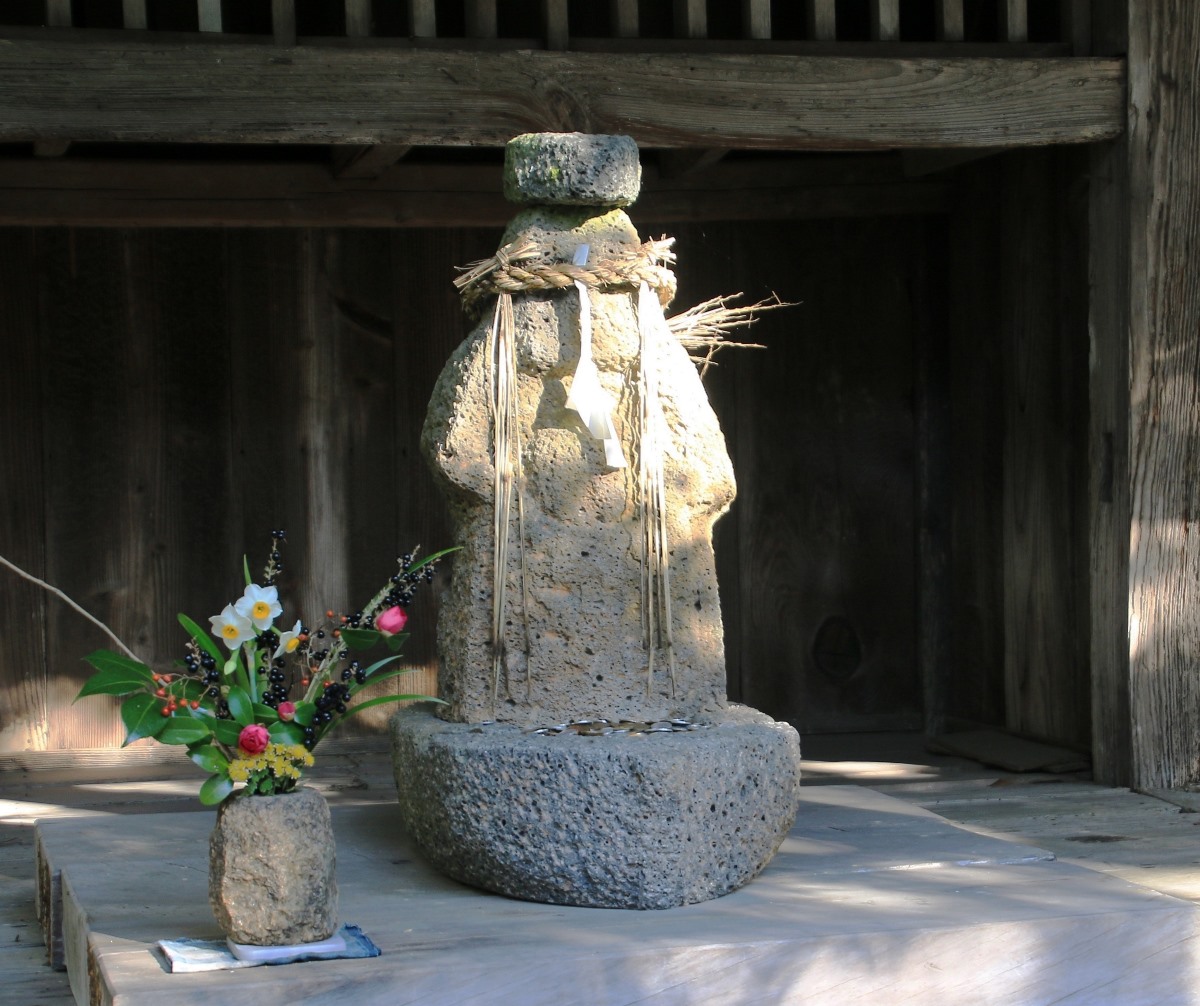Tea Hall “Yuan”
- Period:
Prior to 1853 (End of the Edo Period)
- Former Location:
Kihoku, Kitauwa, Ehime Prefecture
- Designation
Takamatsu City Registered Tangible Cultural Property
A place of healing and prayer dedicated to Jizo Bodhisattva.
The tea hall was owned by the Kamigumi district of Hiromi, Ehime Prefecture. In addition to the earthen floored doma and wooden floored section, in the back is an altar for a Buddha statue. It served both as a place of worship for the villagers and as a place of community serving tea for villagers and passersby. Sculptor Masayuki Nagare created the Jizo Bodhisattva currently dedicated in the temple, and nun Jakucho Setouchi consecrated it.

Graffiti in the hut
A close look at the pillars and ceiling inside the hut will reveal ink inscriptions that appear to have been left behind by pilgrims who toured the sacred sites of Shikoku during the Edo period (1603-1867).
Did Ryoma Sakamoto stop here?
This tea hut stood along the Ryuo Highway, which Ryoma Sakamoto took when he left the Tosa Domain. He could very well had stopped by for a rest!
Henro pilgrimage culture
Some believe that taking the Henro pilgrimage of 88 sacred sites on Shikoku will release one from troubles and make wishes come true. In the Edo period (1603-1867), this practice spread beyond ascetic monks to become part of general public culture. Even today, many people join the pilgrimage, and the annual Henro population is said to number in the hundreds of thousands. The culture of Henro hospitality, where locals offer food and drink to pilgrims and provide lodging and rest areas free of charge, is still deeply rooted throughout Shikoku.





























